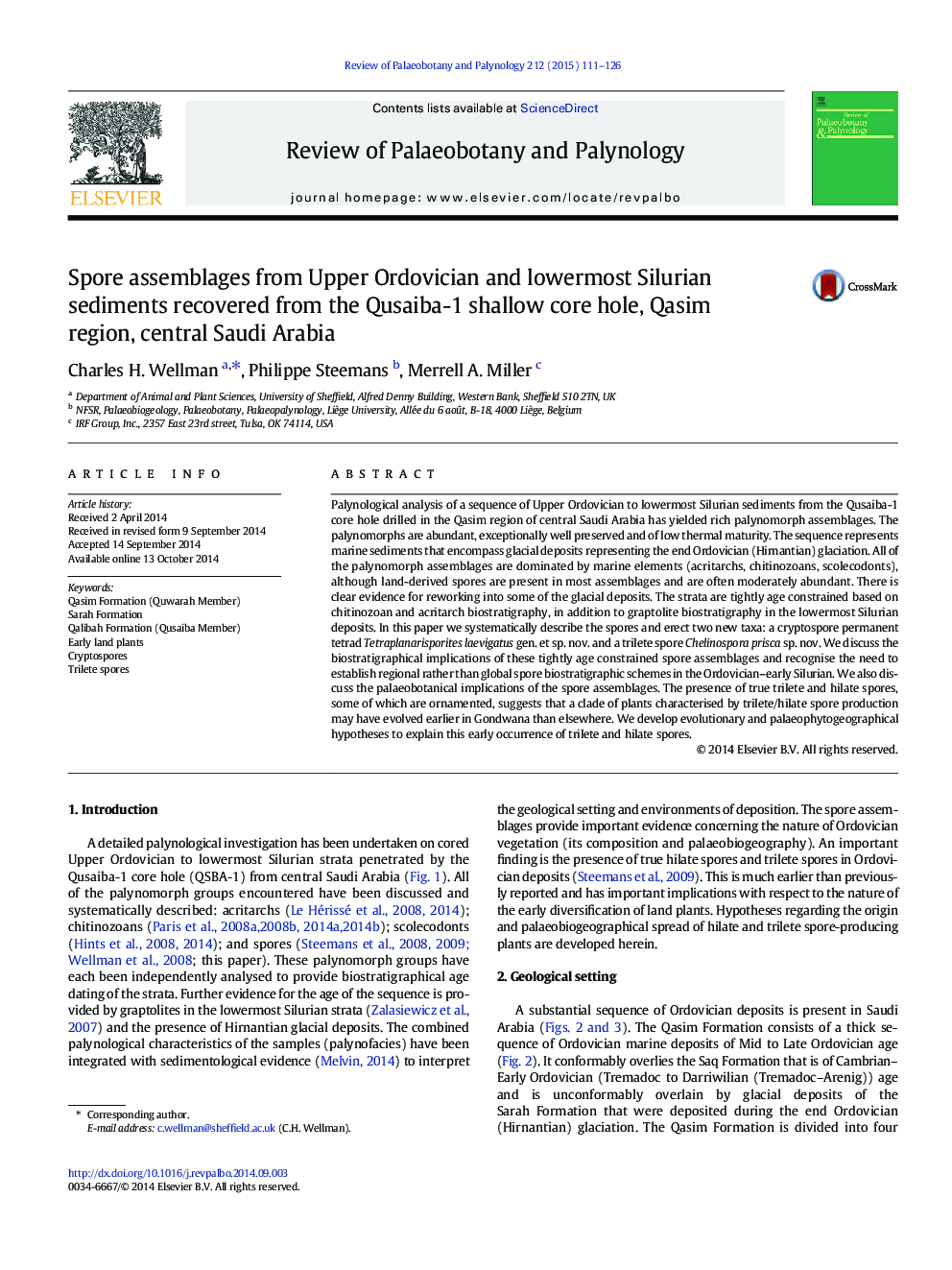| Article ID | Journal | Published Year | Pages | File Type |
|---|---|---|---|---|
| 4750205 | Review of Palaeobotany and Palynology | 2015 | 16 Pages |
•Exquisitely preserved spores from the Late Ordovician of Saudi Arabia•Earliest reported occurrence of trilete spores in the fossil record•New genus of cryptospore permanent tetrad preserved in planar configuration
Palynological analysis of a sequence of Upper Ordovician to lowermost Silurian sediments from the Qusaiba-1 core hole drilled in the Qasim region of central Saudi Arabia has yielded rich palynomorph assemblages. The palynomorphs are abundant, exceptionally well preserved and of low thermal maturity. The sequence represents marine sediments that encompass glacial deposits representing the end Ordovician (Hirnantian) glaciation. All of the palynomorph assemblages are dominated by marine elements (acritarchs, chitinozoans, scolecodonts), although land-derived spores are present in most assemblages and are often moderately abundant. There is clear evidence for reworking into some of the glacial deposits. The strata are tightly age constrained based on chitinozoan and acritarch biostratigraphy, in addition to graptolite biostratigraphy in the lowermost Silurian deposits. In this paper we systematically describe the spores and erect two new taxa: a cryptospore permanent tetrad Tetraplanarisporites laevigatus gen. et sp. nov. and a trilete spore Chelinospora prisca sp. nov. We discuss the biostratigraphical implications of these tightly age constrained spore assemblages and recognise the need to establish regional rather than global spore biostratigraphic schemes in the Ordovician–early Silurian. We also discuss the palaeobotanical implications of the spore assemblages. The presence of true trilete and hilate spores, some of which are ornamented, suggests that a clade of plants characterised by trilete/hilate spore production may have evolved earlier in Gondwana than elsewhere. We develop evolutionary and palaeophytogeographical hypotheses to explain this early occurrence of trilete and hilate spores.
